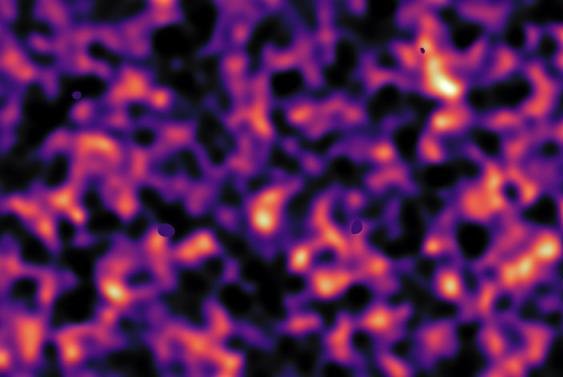New cosmic shear analysis using data from ESO's Very Large Telescope shows the distribution of dark matter is smoother than previously suggested. Photo by ESO/VLT
BONN, Germany, Dec. 7 (UPI) -- New analysis of a phenomenon known as cosmic shear suggests dark matter is less dense and more evenly -- or smoothly -- distributed throughout space. The revelation was detailed this week in a new paper published in the Monthly Notices of the Royal Astronomical Society.
Cosmic shear is a type of gravitational lensing, the subtle warping of light waves emitted by distant galaxies as they travel past, around and through large clumps of cosmic matter, like galaxy clusters. Cosmic shear, specifically, isn't the warping effect caused by specific galactic clusters, but the distortions caused by large-scale cosmic structures.
A new computer model armed with image from the European Southern Observatory's Very Large Telescope helped astronomers conduct a survey of cosmic shear through the universe.
The new findings disagree with those made by a similar survey conducted using the European Space Agency's Planck satellite. The ESA Kilo Degree Survey characterized the universe's matter as clumpy, while the latest results suggest a smoother dispersal.
"This latest result indicates that dark matter in the cosmic web, which accounts for about one-quarter of the content of the Universe, is less clumpy than we previously believed," Massimo Viola, an astronomer at the Leiden Observatory in the Netherlands, said in a news release.
Because dark matter continues to escape direct observation, scientists' understanding of it and its role in the organization of the universe relies on surveys and analysis like the one led by Viola and his colleagues.
The latest findings aren't necessarily superior to those of ESA's survey, but reveal the necessity for further exploration of cosmic shear and the distribution of matter. The findings will also force astronomers to rethink a variety of cosmic models.
"Our findings will help to refine our theoretical models of how the Universe has grown from its inception up to the present day," said Hendrik Hildebrandt, a researcher with the Argelander Institute of Astronomy at the University of Bonn.















